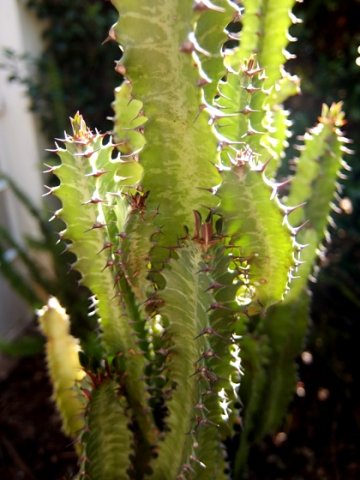Euphorbia trigona

Euphorbia trigona, commonly African milk tree, grows erect branches with three or sometimes four sides. The plant is from tropical Africa, probably West Africa and may be a hybrid not known to flower.
Sold by nurseries locally and in many countries worldwide, it grows to over 2 m tall in moderate temperatures, needing little watering. It grows easily from stem cuttings. Large trees are said to fall over from a poor root system. The latex should not be ingested or come into contact with eyes.
The dark green stems have pale green markings concentrated up the central channels of the blades with thin lines to the ridges. Paired spines, angled sideways and about 5 mm long, grow spaced on small cushions along the stem ridges. Small, obovate leaves grow on stem ridges between the spines on new stem parts, dropping off early (Wikipedia).

